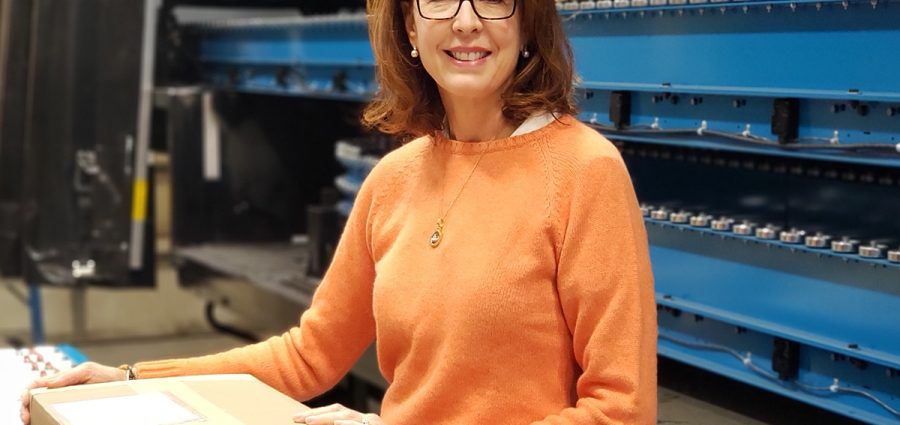In the last five years, Ultimation Industries, a conveyor technology and automation manufacturer based in Roseville, Michigan, has gone from near total project-based sales to around 40% e-commerce — with a chunk of those online sales coming through Amazon. MDM spoke with CEO Jacqueline Canny about the company’s hybrid approach to online sales and how they are leveraging Amazon Business to make it happen.
MDM: How did you get into the business?
Canny: I acquired Ultimation in 2011 but the company itself has been in existence since 1988. It was owned by two brothers at the time who primarily made custom machinery. A lot of people were doing manufacturing offshore at that time. I have automotive in my blood. My father, my brother, everyone worked in the auto business. It made a lot of sense to me for some of these items to still be made in the USA, especially since we were doing more larger assemblies and systems that needed to be produced quickly and made close to the customer. We do conveyor systems and material handling equipment and they're bulky and awkward to assemble. We have a pretty good manufacturing hub in the Detroit area. I saw an opportunity in that. The company's name, Ultimation, is about the only thing that I didn't change with the company.
MDM: What changes did you make?
Canny: Historically, we were project-based. We mostly did large systems and projects. We started doing overhead conveyors, power and freight conveyors. We did tire wheel delivery systems that use motorized rollers, tire and wheel assembly lines for trucks, big wheels that mount and inflate tires every 25 seconds. That was traditionally our main customers in the automotive business. We realized we needed to branch out a little bit from that. We decided to try some online sales, around 2015.
MDM: Why get into the online sales in 2015?
Canny: Well, we were a customer ourselves. We purchased a lot of things online. And we realized that a lot of cities, purchasing agents and buyers are using channels like Amazon and Google because everyone wants everything fast. They want the lowest cost. They want the best suppliers. They want great service. We started investing heavily in SEO or search engine optimization to generate leads for the project side of the business initially. And that was very successful. That began our experiment with online sales. We developed a range of products for online sales in early 2016. We began selling on Amazon shortly after that.
MDM: What’s been your experience selling on Amazon?
Canny: We weren't sure what to expect. We did a lot of sales on our own site and we saw that that was working, so we thought we'd branch out a bit. Our initial target for Amazon sales was home handymen and women. Not exactly the business-to-business customers, but individuals who have a home or a small business. That was a subset of our products online that would complement the project side of our business. And that was pretty successful.
We were looking for an additional sales channel to quick-ship conveyors and material handling products we were developing. For business to business customers, that's especially valuable because they're not used to getting this type of equipment quickly. We've had to come up with more standardized components with lower price points and quick shipping times. That's an evolved process — that certainly didn't happen overnight. The first couple of products that we sold online were I-beam trolleys. Those are trolleys that run on an I-beam that allow you to lift and move items along the beam. Another one was a system of rollers that helps people move cartons or pallets. And so Amazon really helped us differentiate our business in that particular marketplace.
MDM: How has your experience been working with Amazon as a selling partner? Is there much interaction with Amazon itself?
Canny: No, there isn't a whole lot of interaction. There's a lot of feedback that we get, parameters that we need to fall within. They set up the parameters that you need to adhere to and it's a pretty high standard, which has also helped us to improve our business. We did a lot of research on our own to get the word-search optimization going and figure out what we were doing on there. It is kind of a science. We get feedback from Amazon if there’s any ebb and flow or if there’s any errors. We have currently a 4.8-star rating out of 5.0. And we watch that carefully.
MDM: Do you have sales people who are dedicated to the Amazon selling?
Canny: Yes, we definitely had to change to accommodate that. It was a shift for the sales team. It was exciting and it was positive, but we needed to create a new internal sales team to accommodate the volume of business that was generated for us by online sales. The ladies and the men here have a great work ethic. They're great at customer service and taking care of the details. We pride ourselves in answering every phone call with a live sales associate during business hours. We get back to every inquiry within 24 hours and make information available as we can on our website because a better-educated customer helps us. The more information they can learn online, the more specific they are on what they need to order. Every contact we get is an opportunity to learn how to be a little bit more customer focused.
MDM: How is selling on Amazon shifting your business model? What percentage of your sales are through e-commerce now?
Canny: From 2011 to 2014, it was 100% projects. Working in the shop, with welders and building systems. And then once we got online, it switched. Currently e-commerce generates about 40% of our business. Amazon specifically represents at least 10% of that.
MDM: Are there any lessons that you've learned or tips that you can share with other distributors who are curious about opening up a relationship with Amazon Business or any online platform?
Canny: What we've learned is if you're dealing with digital and online sales, you have to make sure that you meet the delivery and shipping time requirements. When we first started doing it, we used to physically deliver our stuff to UPS or FedEx and have it sent from there. Now we have them pick it up because it's just so much more efficient. Make sure you're able to meet the delivery times, the shipping time requirements. And if you list an item, you better make sure you have it in stock at all times.



